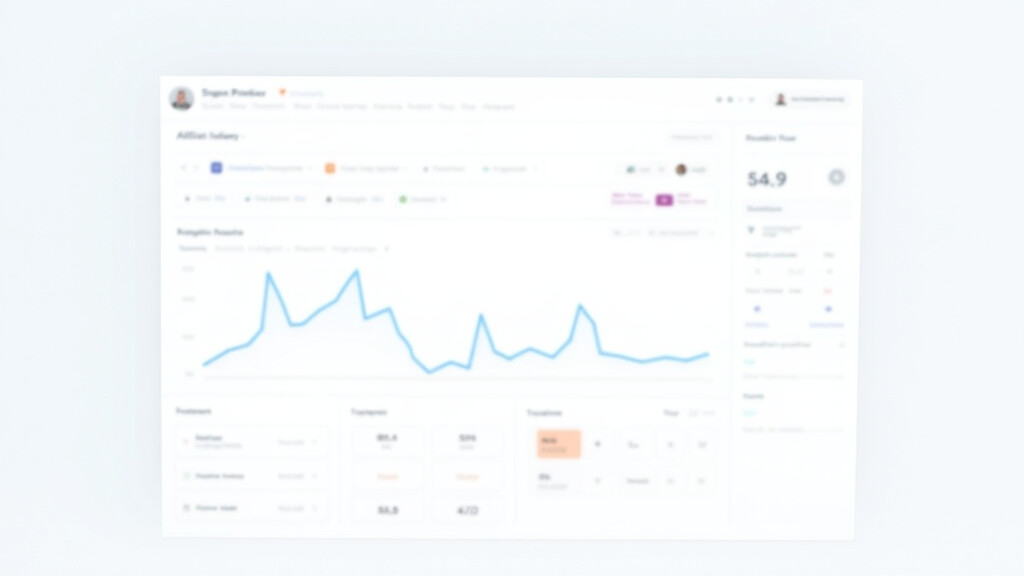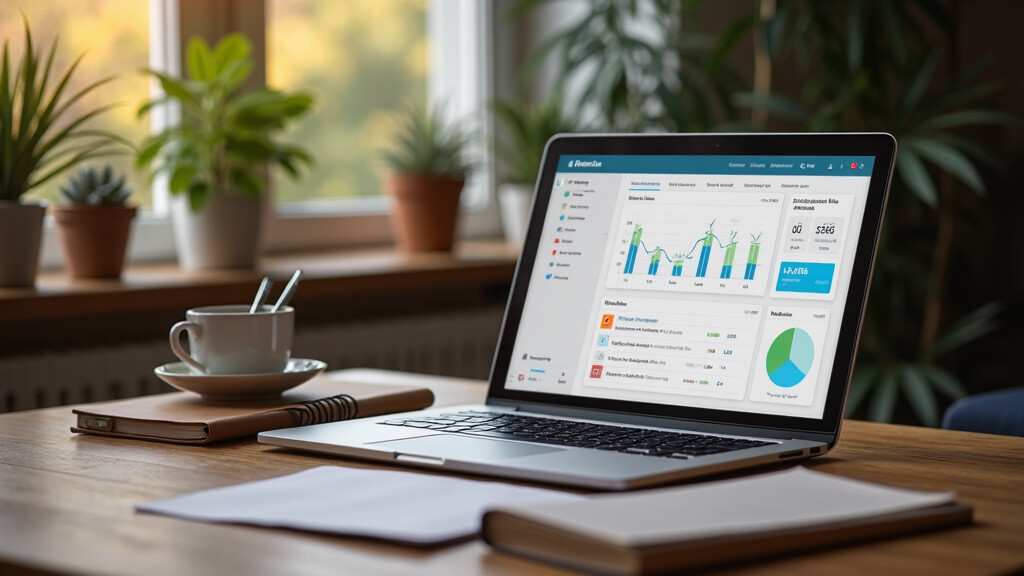Affiliate marketing is a flexible and popular way to generate income online, especially for those seeking the freedom to work from home or looking to set up a side hustle. Many people have heard about affiliate marketing, but knowing where to start can be confusing.
I have been involved in affiliate marketing since 2010, and have had many successes from my efforts. The thing about affiliate marketing is proper training. Once you know how it works and what actions to take, it is much easier to see some initial success.
This guide is here to break down the process so you feel confident tackling affiliate marketing from scratch even with zero experience. We’ll cover everything you need, from picking your first program to creating awesome affiliate content, making sure you don’t get lost in the process. Let’s roll up our sleeves and get into it!

What Is Affiliate Marketing and How Does It Work?
Affiliate marketing is a business model where you earn a commission by promoting other people’s products or services. There’s no need to create, store, or deliver products yourself. Here’s how it works: you partner with a company, promote a unique referral link, and get paid a percentage whenever someone buys using your link.
The concept sounds straightforward, but there are important parts you should understand. You’ll run into these terms often:
- Affiliate: That’s you, the person recommending a product.
- Merchant: The company selling the product or service.
- Affiliate network: Third-party sites that list products and manage relationships (like ShareASale or CJ Affiliate).
- Tracking link: The special web link with an ID code that connects a sale back to you.
If someone clicks your link and makes a purchase, either immediately or within a specified window, such as 30 days, you earn a commission. The beauty of affiliate marketing is that it works everywhere online, including blogs, YouTube channels, social media, and even email newsletters. You have so many ways to share what you love, making it accessible to just about anyone with a bit of motivation and creativity.
Your First Steps in Affiliate Marketing
The beginning can feel overwhelming, but it’s mostly about staying focused and taking things step by step. Here’s a suggested process to keep things simple but effective:
- Pick a Niche: Choose a subject you truly care about and know something about. For example, if you enjoy cooking, building a website about food or kitchen gear could be the perfect starting point. You’ll find it easier to spot trends, make helpful content, and build honest relationships with your audience.
- Find Affiliate Programs: Look for products you genuinely like. Most brands run their own affiliate programs, or you can browse affiliate networks, such as Amazon Associates, to stumble upon thousands of options.
- Set Up a Website or Social Channel: If you want to build something for the long haul, a website gives you more space to create evergreen content. Still, growing an audience on platforms like TikTok or Instagram works well for certain niches.
- Get Approved for Programs: Some programs accept virtually anyone; others check out your site or social media first. Make your content useful and explain your marketing plans. That will smooth the way to approval.
- Make a Content Plan: Map out what you’re going to post. This could include reviews, helpful comparison guides, tutorials, or product roundups.
Each step sets the stage for the next one. Don’t worry about being perfect. Getting the basics right from the start saves you plenty of time and frustration down the road.

The Main Types of Affiliate Content
Successful affiliates often use a few core content formats that perform well both for search engines and real readers. Here are some formats worth focusing on if you’re new:
- Product Reviews: Dig into a specific product. Share your experiences, go over the pros and cons, and show real screenshots or photos whenever you can.
- Comparison Posts: Put two or more products side by side and help your audience figure out which one is right for them.
- How-To Guides: Blend in helpful learning with subtle recommendations. For instance, a kitchen tutorial can naturally include links to your favorite utensils or gadgets.
- Resource Lists: Share your most trusted products in one article, like “Top 10 Budget Laptops for Students.” These are favorites for both new and returning visitors.
- Video Content: Create unboxing videos, hands-on demos, or step-by-step walkthroughs. People love seeing real opinions before making a purchase.
The main idea is to solve real problems and answer questions your audience already has. The more you help, the more likely people are to use your affiliate links while making their buying decisions.
Things You Need to Consider Before Jumping Into Affiliate Marketing
Affiliate marketing is more than just sticking a few links in your posts. Smart planning helps avoid headaches later. Here are some crucial factors to keep an eye on before you get into it:
- Program Rules and Policies: Always check the terms of each program. Some restrict where you can post links or what claims you can make.
- Cookie Duration: This tells you how long after a click you get credit for a sale. Longer durations are usually better.
- Payout Thresholds: Some programs pay out only after you earn a certain amount, such as $50 or $100. Be ready for this when starting out.
- Competition Level: Some niches are crowded with well-established sites. Try finding opportunities by focusing on more specific subjects and extra-helpful content.
- Disclosure & Trust: Tell your readers about affiliate links. This isn’t just the law (like in the USA), but it also helps build lasting trust.
Building Trust With Your Audience
Trust is your most valuable asset. Always recommend products you truly believe in, and don’t be afraid to mention the downsides. Avoid overhyping just to chase a bigger commission. When your audience sees you as genuine, they’ll trust your advice again and again.
Pacing Your Progress
Affiliate marketing is a marathon, not a sprint. Traffic and commissions usually start slow, so patience is vital. Keep learning, and use free tools like Google Trends to spot new products or keyword ideas. Experiment, track your results, and don’t be afraid to mix things up as you go.

Tips for Boosting Your Affiliate Marketing Results
After you’ve got the basics down, there are practical things you can do to speed up your growth and get bigger results. Try these go-to strategies that are great for beginners and experienced affiliates alike:
SEO Basics Matter: Basic search engine optimization (SEO) helps your site or posts land on Google. Targeting specific, low-competition keywords gives you a fighting chance as a new creator. Tools like Ubersuggest and Ahrefs simplify this process.
Test Different Affiliate Offers: Don’t be afraid to switch to a different brand or a better-paying affiliate offer. Sometimes, these changes can instantly bump up your earnings by a lot. Regularly check your stats to spot what’s doing well.
Add Your Personal Touch: Stories and snippets from your own experience make recommendations believable. For example, “I tried three different wireless mice, and this one turned out to be the best.” That detail matters to readers.
Follow the Rules: Programs and platforms will ban you if you don’t follow their guidelines. That includes not spamming links, being clear with disclosures, and sticking to honest claims.
Automate When You Can: Link management plugins keep your affiliate links organized, and post schedulers help you stay consistent. Automation saves time and lets you focus on what matters most, making quality content.
Being proactive with these approaches helps you make steady improvements. Track key metrics like link clicks, conversion rates, and top traffic sources to spot what’s working and ways to boost your success even more.

Affiliate Marketing Tools for Beginners
You don’t need lots of cash or advanced technical skills to kick things off. These tools are beginner-friendly, save time, and give your results a boost:
- WordPress or Wix: Both are great for making your first website without needing to learn coding.
- Canva: Make social media graphics or blog images quickly—design skills not required.
- Google Analytics: See who’s visiting your site, what content hits home, and where visitors drop off.
- Link Management Plugins: Pretty Links for WordPress shortens and tracks your affiliate links, so you always know what’s working.
- SEO Tools: Ubersuggest and AnswerThePublic help you find popular topics and keywords.
Try the free version of these tools first. As your site or audience grows, you might want to move up to paid plans for more advanced features. And always focus on tools that help you be more productive—not just what’s shiny and new.

Frequently Asked Questions
Here are answers to some of the most common questions beginners have when starting in affiliate marketing:
Question: How long does it take to start earning?
Answer: For most people, it takes at least a few months of steady effort to start seeing regular commissions. Results depend on your content, niche, and traffic numbers, but dedication is usually rewarded.
Question: Can I do affiliate marketing without a website?
Answer: Yes! Social media, YouTube, and even email can work. However, a website gives you long-term control and a reliable place for people to find you. Using both can multiply your reach.
Question: Are there costs involved?
Answer: Most beginner tools offer free versions. If you make a website, you’ll pay for a domain and hosting, but other costs are optional. Starting affiliate marketing doesn’t have to break the bank.
Final Thoughts on Starting Affiliate Marketing
Affiliate marketing is open to anyone with an internet connection and the desire to learn. Picking a topic you enjoy helps a lot, especially during the early stages when growth is slow.
The key is to stick with it, show up often, try new things, and focus on building real trust with your audience. There isn’t a one-size-fits-all path to success. Try fresh ideas, learn from your results, and keep improving.
Your online earning adventure might start with just a trickle, but if you keep at it, there’s real potential to build up a steady, flexible income stream from anywhere. Stick it out through the learning curve. Affiliate marketing really can pay off with freedom and rewarding results.
____________________________________________
If you want more tips and resources about making money online, check out this resource page.
I’m happy to answer questions or help you figure out your next steps in digital marketing. Drop a comment or reach out any time you want more guidance or ideas.

To learn more about Howard, you can check out this article.
My involvement in operating a serious online business began in 2014, and I didn’t do it alone! Online success requires hard work, perseverance, and assistance to learn these skills.
The industry is constantly evolving, particularly with the rapid growth of Artificial Intelligence (AI) in the online world.
If you want to learn how to create great website content with AI easily and have an online business that generates income 24/7, 365, then you may want to check out how I did it.
I used this source to learn, engage with others for assistance, and create online income using multiple affiliate marketing sources.
You can also reach out to me by leaving a comment below. I will get back to you!
======> Can You Afford Not to Make Money Online? <======
